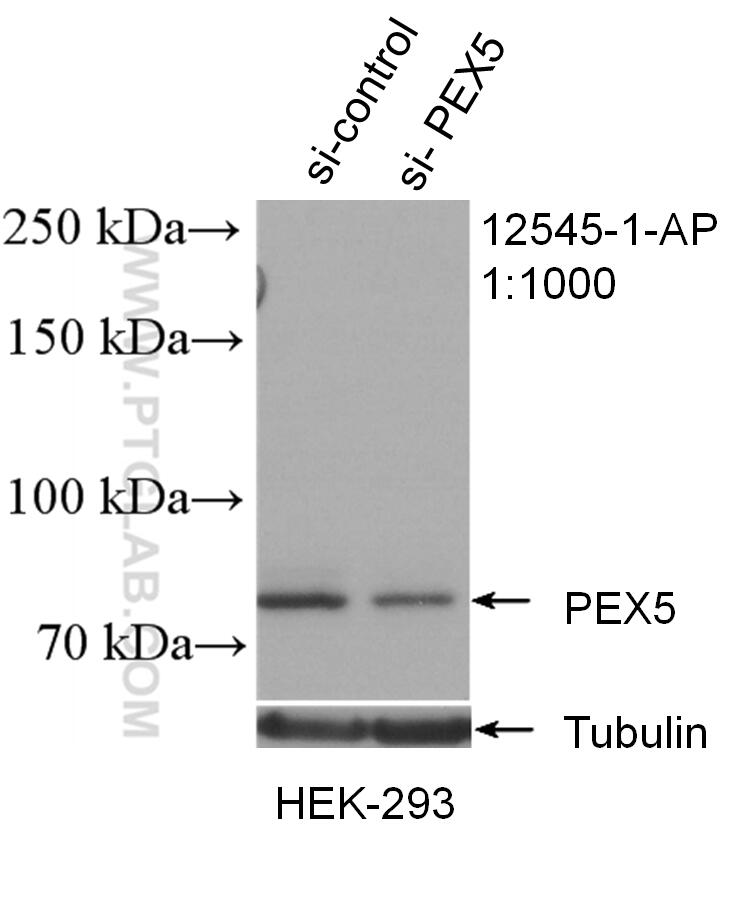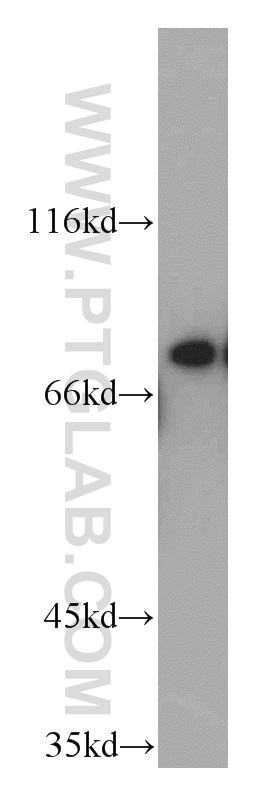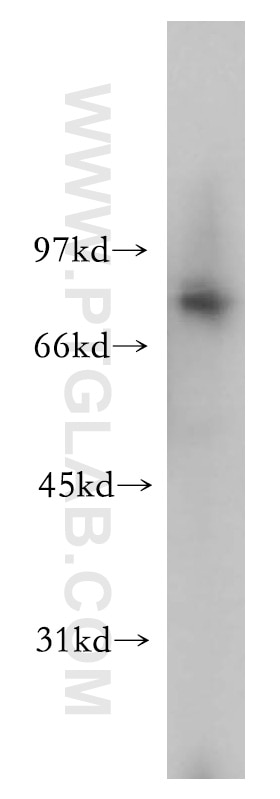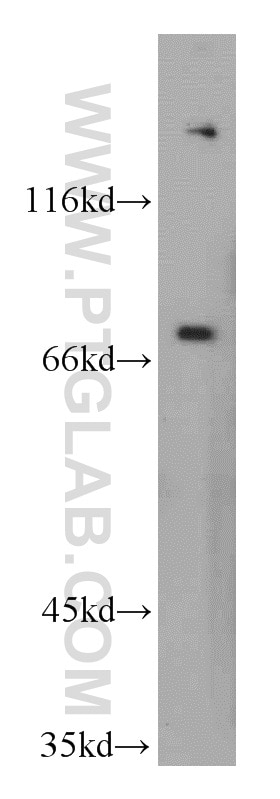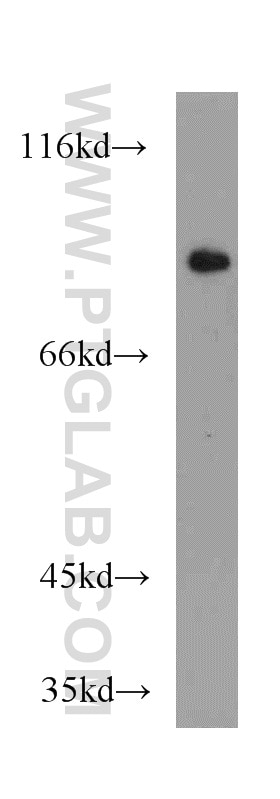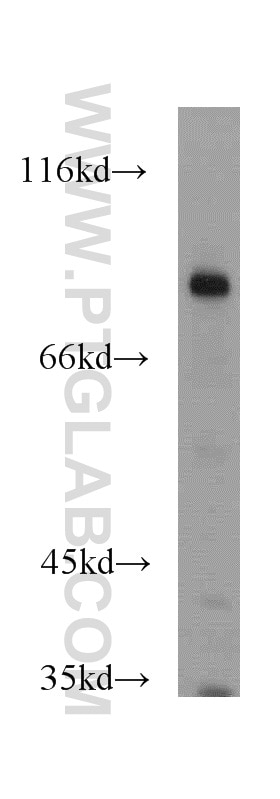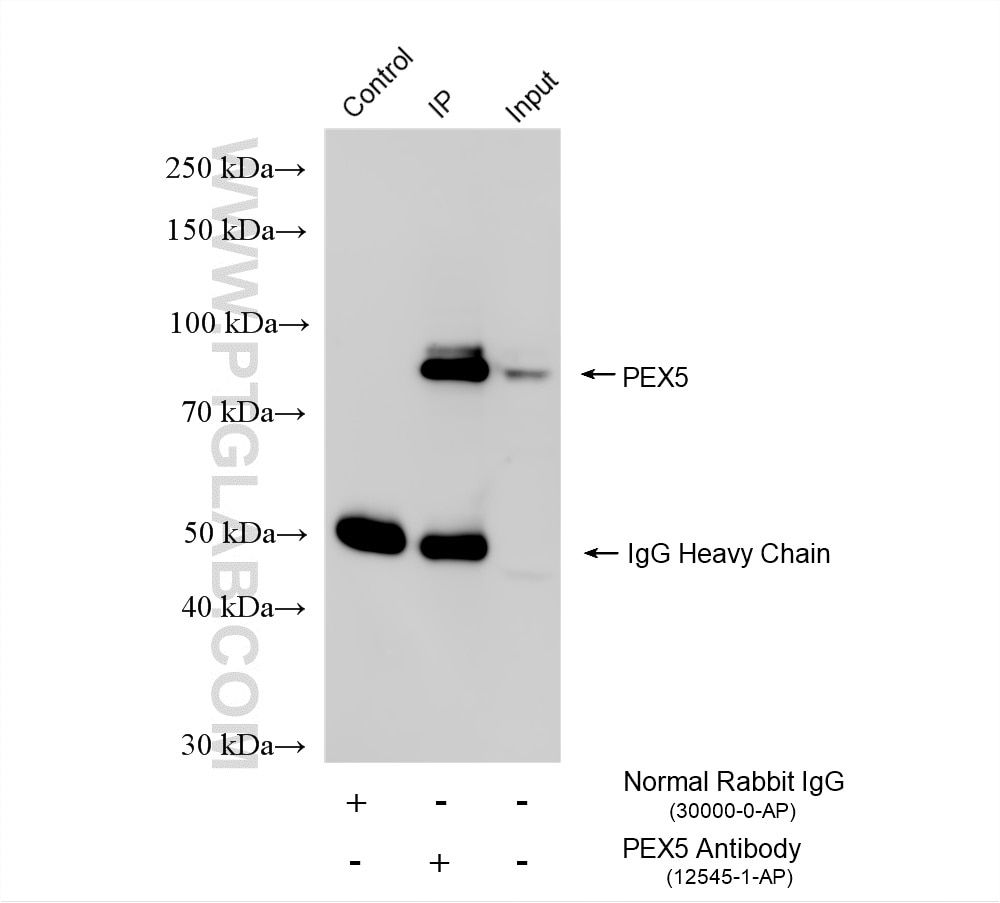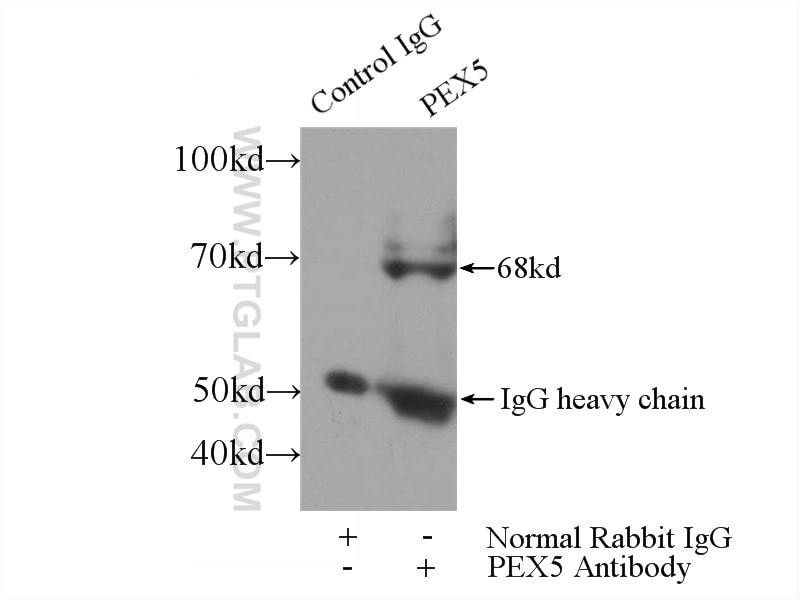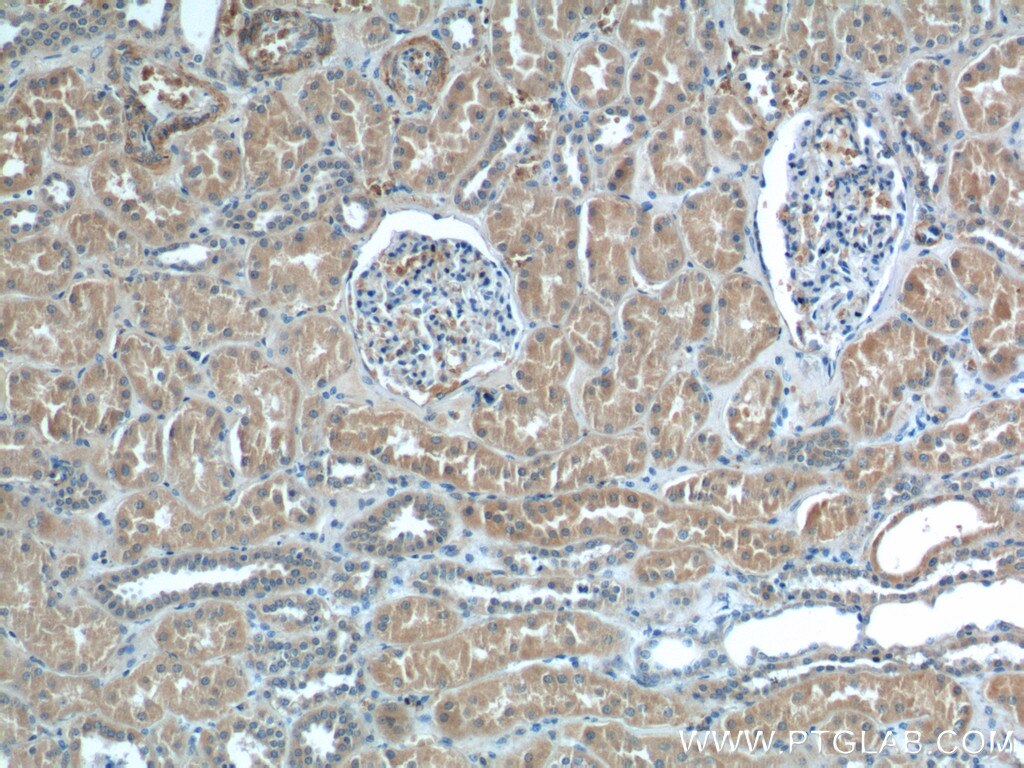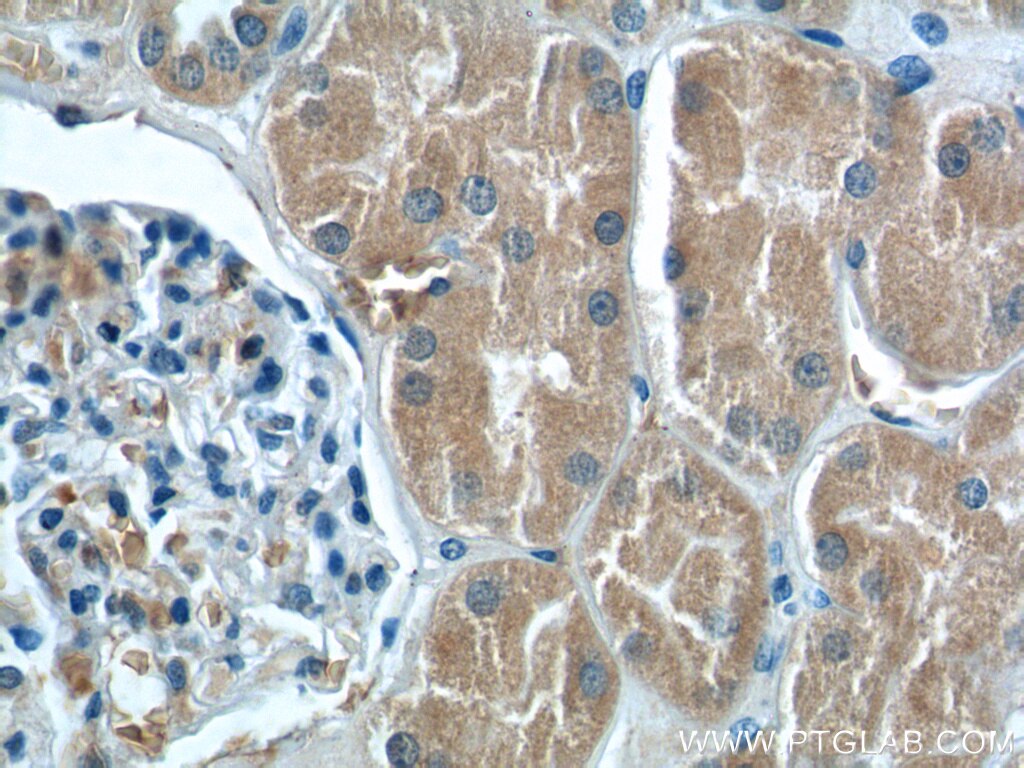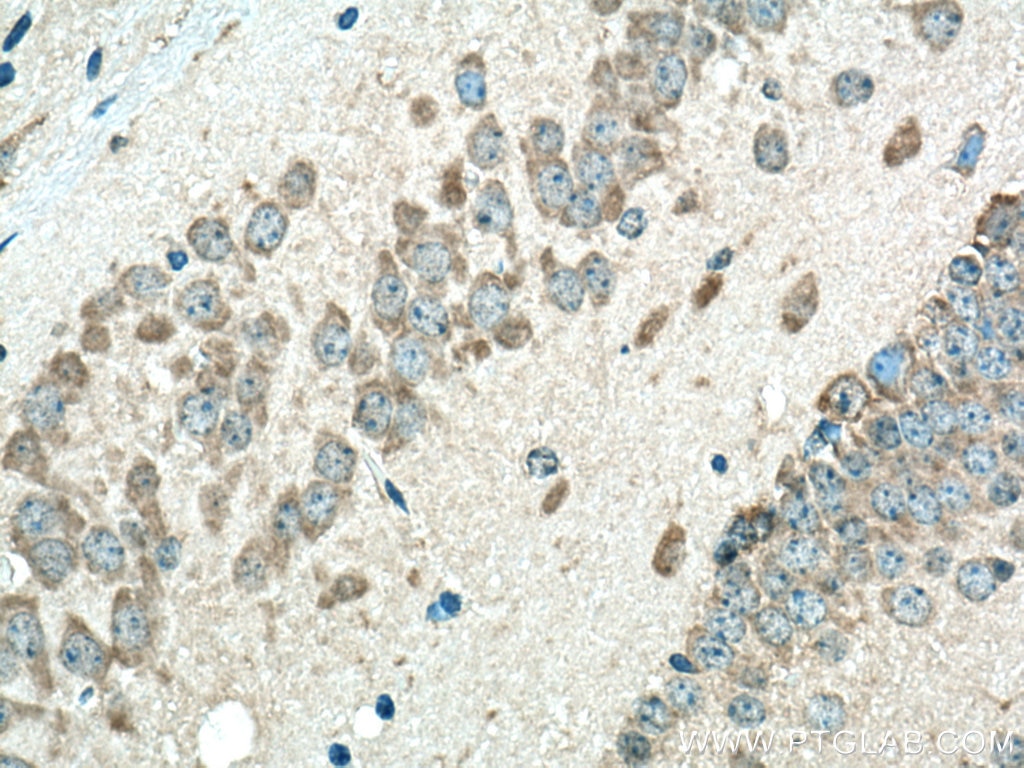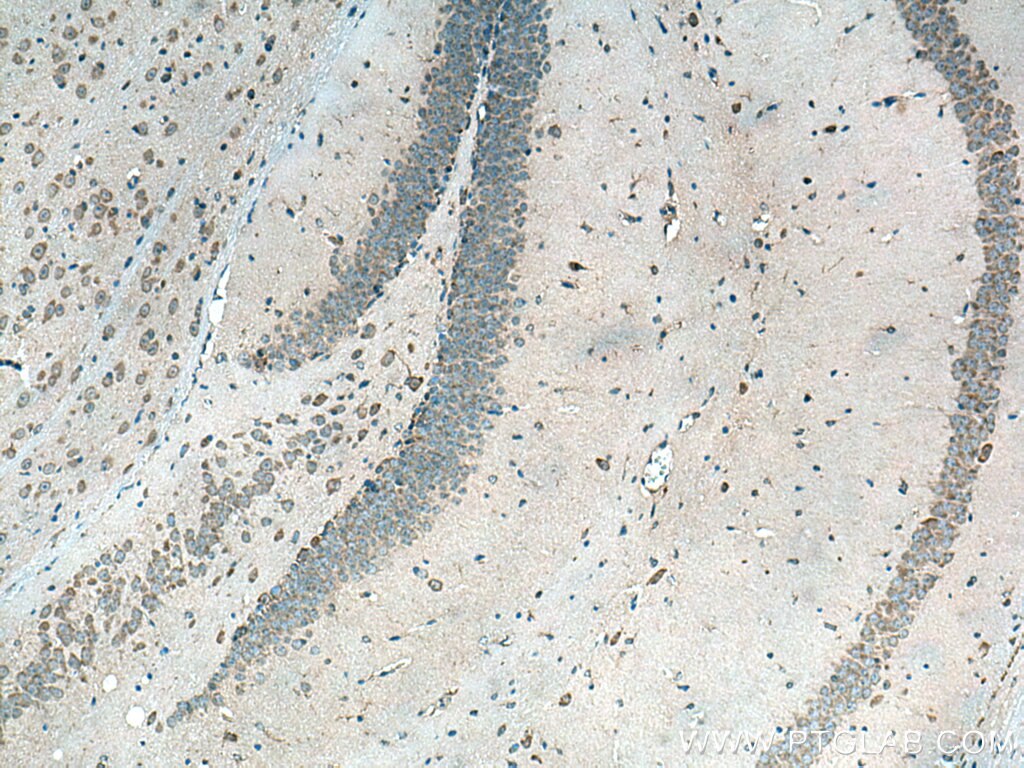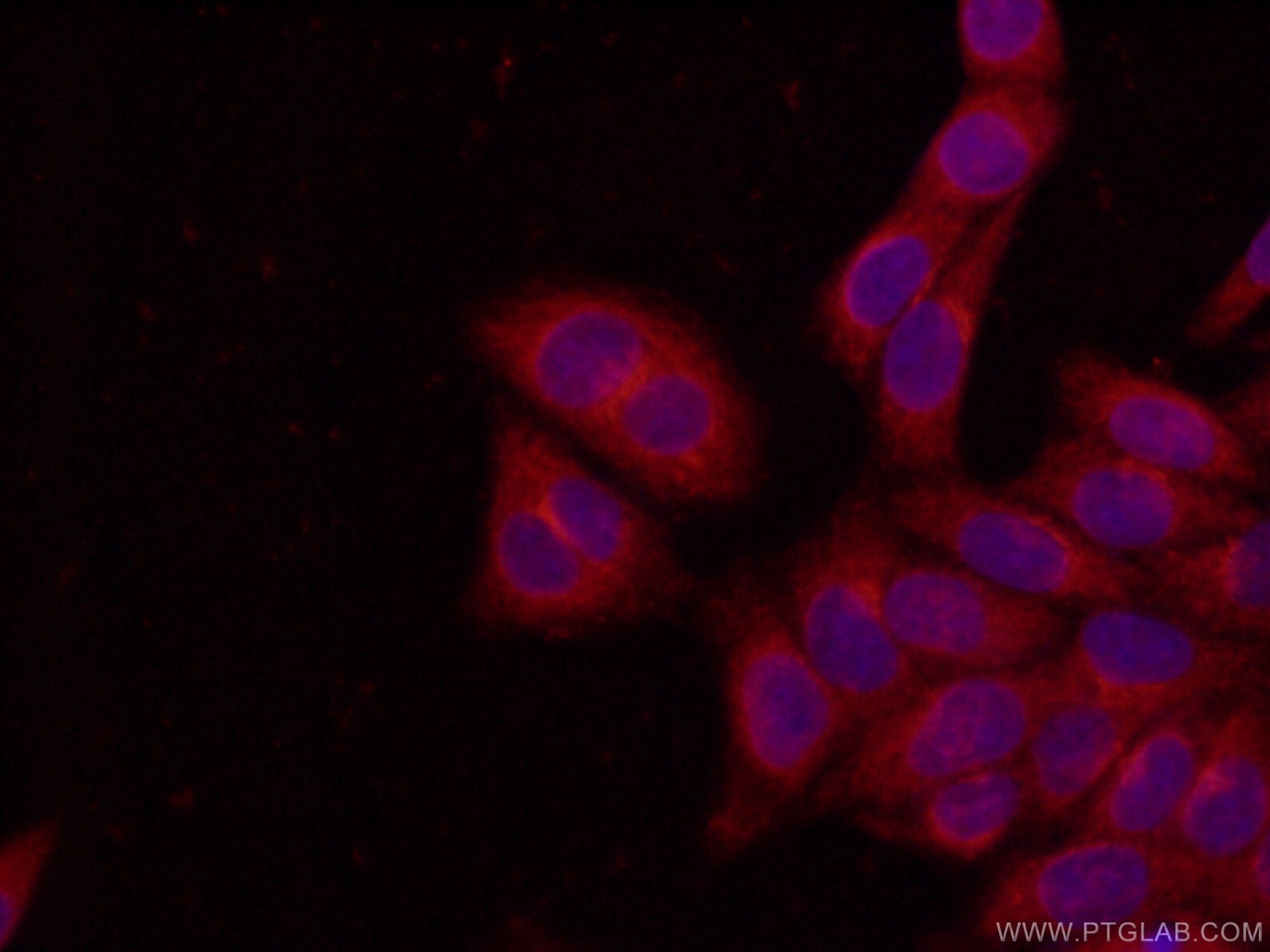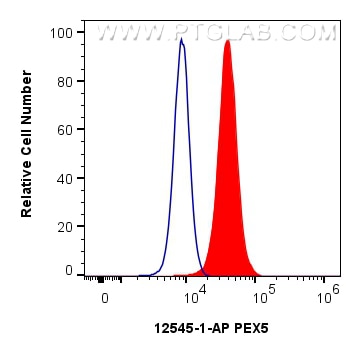Tested Applications
| Positive WB detected in | human brain tissue, L02 cells, mouse kidney tissue, mouse brain tissue, human kidney tissue, HEK-293 cells |
| Positive IP detected in | Raji cells, mouse kidney tissue |
| Positive IHC detected in | human kidney tissue, mouse brain tissue Note: suggested antigen retrieval with TE buffer pH 9.0; (*) Alternatively, antigen retrieval may be performed with citrate buffer pH 6.0 |
| Positive IF/ICC detected in | HeLa cells |
| Positive FC (Intra) detected in | HEK-293 cells |
Recommended dilution
| Application | Dilution |
|---|---|
| Western Blot (WB) | WB : 1:500-1:2000 |
| Immunoprecipitation (IP) | IP : 0.5-4.0 ug for 1.0-3.0 mg of total protein lysate |
| Immunohistochemistry (IHC) | IHC : 1:100-1:400 |
| Immunofluorescence (IF)/ICC | IF/ICC : 1:50-1:500 |
| Flow Cytometry (FC) (INTRA) | FC (INTRA) : 0.50 ug per 10^6 cells in a 100 µl suspension |
| It is recommended that this reagent should be titrated in each testing system to obtain optimal results. | |
| Sample-dependent, Check data in validation data gallery. | |
Published Applications
| KD/KO | See 3 publications below |
| WB | See 19 publications below |
| IF | See 6 publications below |
| IP | See 2 publications below |
| CoIP | See 2 publications below |
Product Information
12545-1-AP targets PEX5 in WB, IHC, IF/ICC, FC (Intra), IP, CoIP, ELISA applications and shows reactivity with human, mouse, rat samples.
| Tested Reactivity | human, mouse, rat |
| Cited Reactivity | human, mouse, rat, pig |
| Host / Isotype | Rabbit / IgG |
| Class | Polyclonal |
| Type | Antibody |
| Immunogen |
CatNo: Ag3268 Product name: Recombinant human PEX5 protein Source: e coli.-derived, T-HIS Tag: 6*His Domain: 340-639 aa of BC010621 Sequence: EGDLPNAVLLFEAAVQQDPKHMEAWQYLGTTQAENEQELLAISALRRCLELKPDNQTALMALAVSFTNESLQRQACETLRDWLRYTPAYAHLVTPAEEGAGGAGLGPSKRILGSLLSDSLFLEVKELFLAAVRLDPTSIDPDVQCGLGVLFNLSGEYDKAVDCFTAALSVRPNDYLLWNKLGATLANGNQSEEAVAAYRRALELQPGYIRSRYNLGISCINLGAHREAVEHFLEALNMQRKSRGPRGEGGAMSENIWSTLRLALSMLGQSDAYGAADARDLSTLLTMFGLPQ Predict reactive species |
| Full Name | peroxisomal biogenesis factor 5 |
| Calculated Molecular Weight | 631 aa, 70 kDa |
| Observed Molecular Weight | 68-80 kDa |
| GenBank Accession Number | BC010621 |
| Gene Symbol | PEX5 |
| Gene ID (NCBI) | 5830 |
| RRID | AB_2268102 |
| Conjugate | Unconjugated |
| Form | Liquid |
| Purification Method | Antigen affinity purification |
| UNIPROT ID | P50542 |
| Storage Buffer | PBS with 0.02% sodium azide and 50% glycerol, pH 7.3. |
| Storage Conditions | Store at -20°C. Stable for one year after shipment. Aliquoting is unnecessary for -20oC storage. 20ul sizes contain 0.1% BSA. |
Background Information
The peroxisomal targeting signal type1 (PTS1) receptor, PEX5, is one member of peroxins (PEXs) which are proteins required for peroxisome assembly. PEX5 and PEX7 function as receptors that recognize PTS1- and PTS2- containing proteins, respectively, and PEX5 binds PTS1 through its C-terminal 40-kDa tetratricopeptide repeat domain. It is a predominantly cytoplasmic, partly peroxisomal protein that appears to shuttle between these compartments as it mediates the import of PTS1-containing proteins. PEX5 has been reported to interact with PEX10, PEX12, PEX13, and PEX14. Defects in PEX5 are a cause of Zellweger syndrome (ZWS), which is a lethal peroxisome biogenesis disorder. This antibody recognizes endogenous PEX5, which migrates with an apparent molecular mass of 80 kDa (PMID: 7790377).
Protocols
| Product Specific Protocols | |
|---|---|
| IF protocol for PEX5 antibody 12545-1-AP | Download protocol |
| IHC protocol for PEX5 antibody 12545-1-AP | Download protocol |
| IP protocol for PEX5 antibody 12545-1-AP | Download protocol |
| WB protocol for PEX5 antibody 12545-1-AP | Download protocol |
| Standard Protocols | |
|---|---|
| Click here to view our Standard Protocols |
Publications
| Species | Application | Title |
|---|---|---|
Nat Cell Biol A tuberous sclerosis complex signalling node at the peroxisome regulates mTORC1 and autophagy in response to ROS.
| ||
Autophagy Silencing PEX26 as an unconventional mode to kill drug-resistant cancer cells and forestall drug resistance. | ||
Cell Mol Life Sci Dietary cysteine and methionine promote peroxisome elevation and fat loss by induction of CG33474 expression in Drosophila adipose tissue | ||
Hum Mol Genet A novel type of rhizomelic chondrodysplasia punctata, RCDP5, is caused by loss of the PEX5 long isoform. | ||
Biochim Biophys Acta Mol Cell Biol Lipids Ceramide regulates interaction of Hsd17b4 with Pex5 and function of peroxisomes. |
Reviews
The reviews below have been submitted by verified Proteintech customers who received an incentive for providing their feedback.
FH Zhihui (Verified Customer) (12-12-2018) |
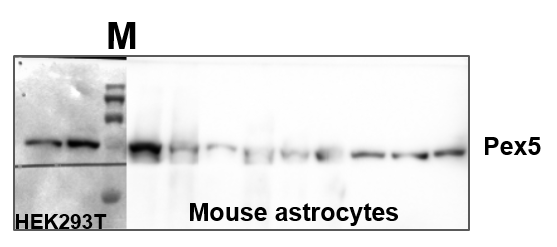 |

